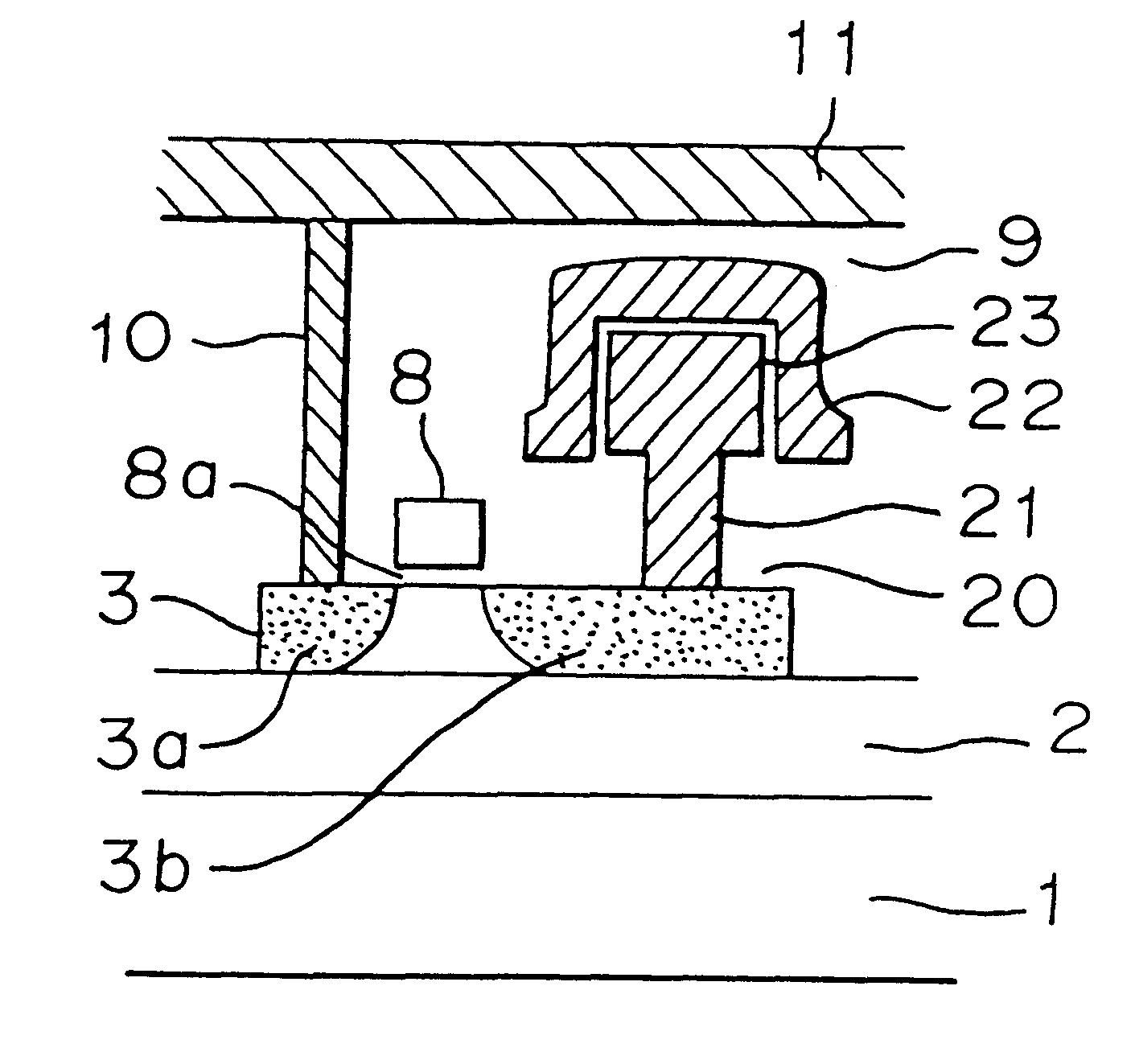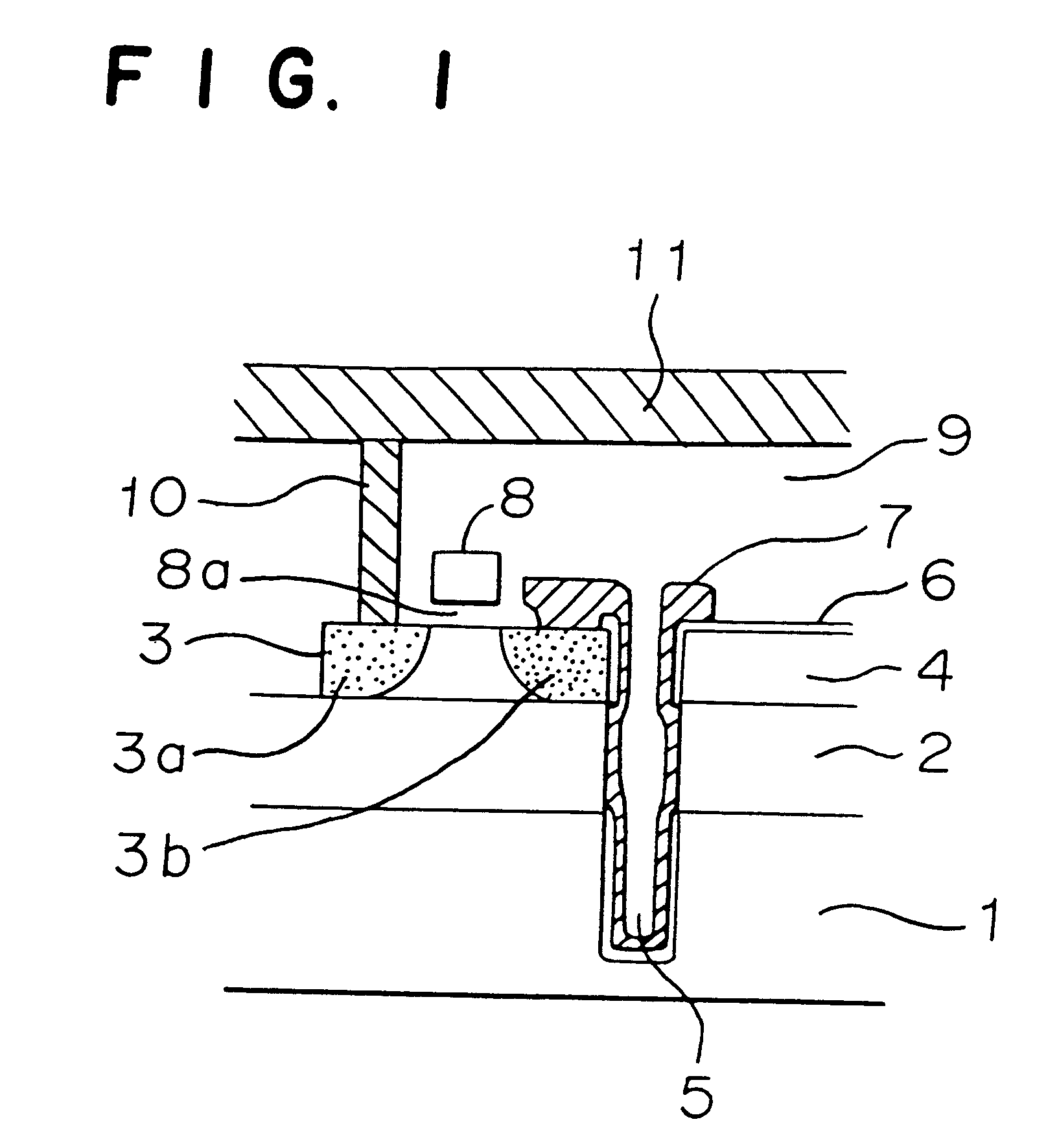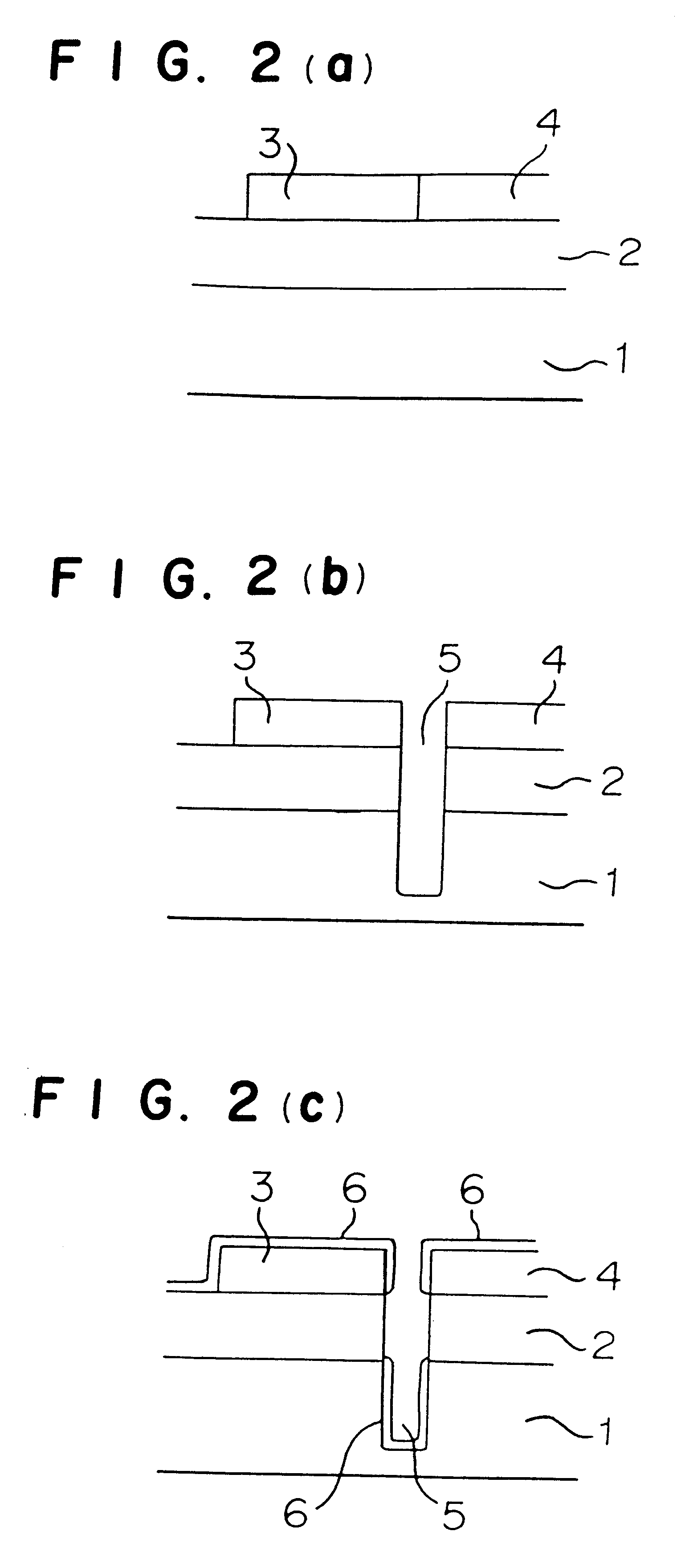Method of manufacturing a semiconductor memory device
a memory device and semiconductor technology, applied in the direction of semiconductor devices, electrical appliances, transistors, etc., can solve the problems of increasing the number of steps of a manufacturing process, unable to achieve effective gettering, and unable to achieve microminiaturization of an elemen
- Summary
- Abstract
- Description
- Claims
- Application Information
AI Technical Summary
Problems solved by technology
Method used
Image
Examples
embodiment 1
FIG. 1 is a cross-sectional view for schematically showing a semiconductor memory device of the present invention. As shown in FIG. 1, silicon on insulator (SOI) structure is adopted, wherein an insulator 2 made of silicon oxide (SiO.sub.2) is formed on a silicon substrate 1 and single crystalline silicon 3 (hereinbelow referred to as an SOI layer) is formed on the insulator 2.
On the SOI layer 3, source drain areas 3a and 3b of a MOSFET are formed and a gate oxide film 8a and a gate electrode 8 are sequentially provided between the source drain areas to thereby form the MOSFET. Meanwhile, it is possible to form an area having low concentration impurities, namely lightly doped drain (hereinbelow referred to as LDD) by injecting the low concentration impurities in ends of the source drain areas 3a and 3b.
Further, a trench 5 is formed in a portion adjacent to the SOI layer; an insulating film 6 such as silicon oxide film is formed in an inner wall of the trench 5; and a polycrystallin...
embodiment 2
FIG. 4 is a cross-sectional view for schematically showing a semiconductor memory device according to Embodiment 2 of the present invention. In FIG. 1 concerning Embodiment 1 of the present invention, the polysilicon 7 to be the storage node is formed like a film on the silicon oxide film 6 in the inner wall of the trench 5. However, in the semiconductor memory device shown in FIG. 4, polysilicon 7 to be a storage node is embedded in the overall volume of a trench and formed like a plug. The other features are similar to those in FIG. 1 and therefore description is omitted.
In the next, a method of manufacturing the semiconductor memory device shown in FIG. 4 will be described. As for the method of manufacturing, the amount of depositing the polysilicon shown in FIG. 3b is increased in comparison with that of Embodiment 1 so that the polysilicon is sufficiently embedded in the trench. The following steps are similar to those in Embodiment 1 and therefore description is omitted.
Becaus...
embodiment 3
FIG. 5 is a cross-sectional view for schematically showing a semiconductor memory device according to Embodiment 3 of the present invention. In FIG. 1 concerning Embodiment 1, the gate electrode is formed so that the gate electrode is not formed on a portion for connecting the polysilicon 7 to be the storage node to the SOI layer 3. However, in the semiconductor memory device shown in FIG. 5, a gate electrode is formed so that a part of the gate electrode is formed in a portion for connecting a polysilicon 7 to be a storage node to an SOI layer 3. The other features are similar to those in FIG. 1 and therefore description is omitted.
In the next, a method of manufacturing the semiconductor memory device shown in FIG. 5 will be described. At a time of forming the polysilicon shown in FIG. 3b, one end of the polysilicon 7 connected to the SOI layer 3 is formed from an end portion of the SOI layer to a region corresponding to a gate electrode. Thereafter, the part of the gate electrode ...
PUM
 Login to View More
Login to View More Abstract
Description
Claims
Application Information
 Login to View More
Login to View More - R&D
- Intellectual Property
- Life Sciences
- Materials
- Tech Scout
- Unparalleled Data Quality
- Higher Quality Content
- 60% Fewer Hallucinations
Browse by: Latest US Patents, China's latest patents, Technical Efficacy Thesaurus, Application Domain, Technology Topic, Popular Technical Reports.
© 2025 PatSnap. All rights reserved.Legal|Privacy policy|Modern Slavery Act Transparency Statement|Sitemap|About US| Contact US: help@patsnap.com



